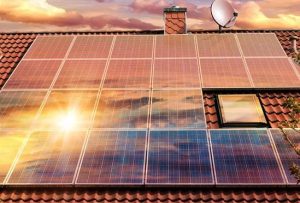What Does 'Photovoltaic Solar Cells' Mean?
In the quest for sustainable and clean energy solutions, photovoltaic (PV) solar cells stand out as a cornerstone technology. These marvels of modern engineering harness the sun's energy and convert it directly into electricity. But what exactly are photovoltaic solar cells, and how do they operate? Let's dive into the photovoltaic solar cells definition, dissecting the science behind them and exploring their significance in our transition to renewable energy sources.

The Science of Photovoltaic Solar Cells
At their core, photovoltaic solar cells are devices that generate electricity from sunlight without moving parts, noise, or emissions. The term "photovoltaic" combines two words: "photo," meaning light, and "voltaic," referring to electricity. Thus, photovoltaic solar cells are essentially light-electricity converters.
How Photovoltaic Solar Cells Work
- Absorption of Sunlight: Each solar cell contains a layer of semiconducting material, typically silicon, which absorbs light when it strikes the cell's surface.
- Generation of Electrical Current: The energy from the absorbed light excites electrons in the semiconductor, freeing them to flow through the material. This flow of electrons is what we know as electricity.
- Creation of an Electrical Circuit: By connecting the positive and negative sides of the cell, an electrical circuit is formed. When electrons flow through this circuit, they generate direct current (DC) electricity.
Key Characteristics of Photovoltaic Solar Cells
- Efficiency: The efficiency of a solar cell is defined as the ratio of electrical energy produced to the solar energy received. Current commercial solar cells typically have efficiencies ranging from 15% to 22%, with laboratory prototypes exceeding 25%.
- Materials: While silicon is the most commonly used material in photovoltaic solar cells, other materials such as cadmium telluride (CdTe) and copper indium gallium selenide (CIGS) are also utilized, each offering unique advantages in terms of efficiency, cost, and application.
- Applications: Photovoltaic solar cells are incredibly versatile, finding applications in everything from residential rooftop installations and large-scale solar farms to portable chargers and space satellites.
The Evolution and Future of Photovoltaic Solar Cells
The development of photovoltaic technology has been marked by continuous advancements in materials science, engineering, and manufacturing processes. These innovations have led to significant reductions in the cost of solar power, making it one of the fastest-growing sources of energy worldwide. The future of photovoltaic solar cells promises even greater efficiencies, lower costs, and broader applications, further solidifying their role in the global energy landscape.
In conclusion, the photovoltaic solar cells definition encompasses more than just the technical workings of these devices. It represents a pivotal shift towards harnessing the abundant and clean energy provided by the sun. As we continue to innovate and improve upon this technology, photovoltaic solar cells will undoubtedly play a critical role in powering our world sustainably and efficiently.